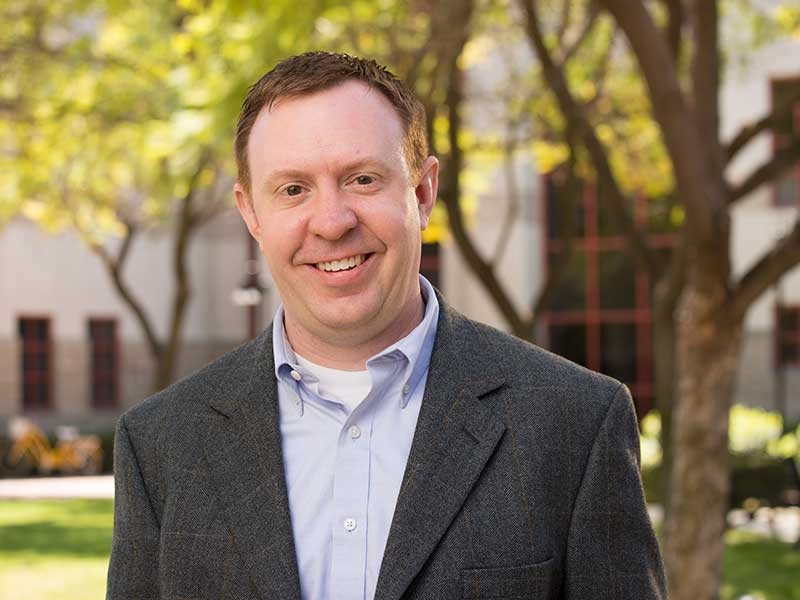Nineteenth-century America saw a nationwide campaign to tame the “Mormon menace.” Promoted by an alliance of religious and secular individuals, institutions, and ideals, it even led President Rutherford B. Hayes to recommend stripping Mormons of their citizenship. Although Contending Modernities will focus primarily on Mormonism’s fellow subjects of modern opprobrium—Islam and Catholicism—it is important to consider such other “shadow cases” as we examine the complex dynamics of religion in modernity. The deep pluralism characteristic of the modern age has posed, and will continue to pose, a substantial challenge to the largely Euro-American-Protestant construct of secularism that dominated much of the nineteenth and twentieth centuries.
An analysis of the “Mormon menace,” like its Catholic and Muslim counterparts, thus raises new questions and provides new insights into some of the most important issues of modern life: debates over the role of citizens, churches, and the state in regulating and defining marriage; the contest between majoritarianism and the rule of law; the nature and limits of religious freedom; and the proper place of religion in the pluralistic public square.
Mormonism and “Asiatic” Marriage
In May 1879, the United States Supreme Court handed down its ruling in Reynolds v. United States. The issue in question was whether Mormons (or members of the Church of Jesus Christ of Latter-day Saints) could practice polygamy, which was an essential part of their religious beliefs at the time, although various federal, state, and territorial laws had rendered the practice illegal.
The Court’s unanimous decision—which was the first-ever ruling on the freedom of expression clause in the First Amendment—declared that while laws “cannot interfere with mere religious belief and opinions, they may with practices.” To permit a man to act contrary to the law because of his faith “would be to make the professed doctrines of religious belief superior to the law of the land, and in effect to permit every citizen to become a law unto himself.” The Court thus established what has become known as the “belief-action distinction,” which has governed American constitutional jurisprudence in this area ever since.
Legal scholars and historians continue to debate whether or not Reynolds is “good law.” Regardless of the particular merits of the ruling, however, it was important in legitimating the use of state power to place limits, by coercion if necessary, on the boundaries of religious freedom. In the ensuing decade, Congress passed a series of punitive laws tightening anti-polygamy laws and ultimately disincorporating the LDS Church and seizing its financial and physical assets until it formally abandoned its practice of “plural marriage” in 1890.
The nationwide campaign to tame the so-called “Mormon menace” was promoted by an alliance of religious and secular individuals, institutions, and ideals. Declaring that “the sanctity of marriage and the family relation are the corner stone of our American society and civilization,” President Rutherford B. Hayes urged that Mormons be stripped of their citizenship if need be. He went so far as to send a formal missive to European governments asking that they block Mormon converts from migrating to America through their ports. (London, for one, politely declined the request.) The Supreme Court linked Mormon polygamy to “Asiatic” and African civilizations based on patriarchy and despotism. A major Baptist editor and church official wrote that Mormonism “is a travesty upon the name of religion, a stench in the nostrils of decency, a constantly running sore, an immense octopus reaching out its slimy tentacles and seeking to seize hold upon our religious, social and political institutions, an ugly and misshapen monster.”
Religious Freedom for Me…. but for Thee?
Americans even debated amongst themselves (dismissively waving away any Mormon input into the conversation) whether or not Mormonism deserved the distinction of being recognized as a real religion. While many admitted that it did make the list of false or corrupt religions, others castigated it as a lustful and criminal enterprise simply “set up under the garb of religion.”
This question was more than an academic or polemical argument. If Mormonism was considered to be a legitimate, though false, religion—the way that most Protestants thought of Catholicism—then it and its members were guaranteed all the freedoms and benefits that other religions enjoyed under the First Amendment. If, however, Mormonism was an illicit scheme using religious forms and rhetoric as a cover for the accomplishment of darker, more sensual and sinister aims, then it was promised none of the constitutional protections of free exercise, and instead deserved to be treated (and its followers prosecuted) as criminal and fraudulent. As one newspaper opined, “All religions are guaranteed by the Constitution, but whenever any system goes beyond common morality, it ceases to be a religion, and should be unceremoniously stopped.” One did not need to deal with the sticky question of how far religious freedom should go if it was determined that religious freedom should not be extended at all.
Mormonism and the Evolution of (yet) Another Modernity
Yet in the end Mormons became one of the great success stories of the twentieth century, shedding their skin as the consummate cultural outsiders to become disproportionately overrepresented in politics, business, and even popular culture. This is a far cry from a time when leading Protestant ministers could openly claim that Mormonism exceeded “the deepest debauchery, superstition and despotism known to Paganism, Mohammedanism or Medieval Papacy.”
There is perhaps, then, a lesson in the evolving story of the “Mormon Menace” about both modernity and the “outsiders” that help to define and reinforce it. Modernity and the “other” with which it has been constantly contrasted—whether Mormonism, “Mohammedanism,” or the “Medieval Papacy”—are not fixed polarities but constantly apt to shape and reshape each other in ways that it is hard for anyone at any given time to anticipate.

